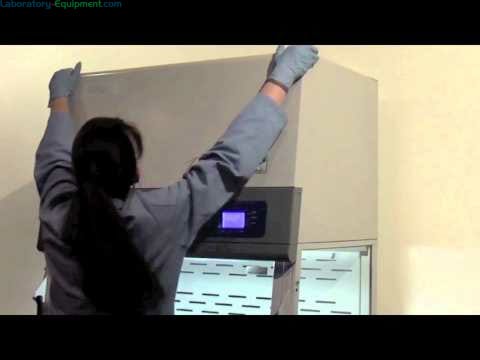- (714) 578-6016
Hours Mon - Fri, 07:00 AM - 06:00 PM (Pacific Time)
Worldwide Pricing and Secure Global Shipping Available!
- Get a QuickQuote
- Free Consultation (714) 578-6016
- Track Order Sorry, no orders are open for tracking
- Home
- Paramount Ductless Enclosures from Labconco

Product Group:
3647-PP-02
3647-PP-02 71377
Paramount Ductless Enclosures from Labconco
Read more



Manufactured By: Labconco
Print
Want a quote quickly ?
Submit a QuickQuote requestProduct Details
Product Details
Product Details
- Filters are stackable: two identical filters can be stacked for better purification or two filter types can be combined for mixed chemical applications
- Six types of carbon filter are available for neutralizing mineral acids, sulfur compounds, ammonia, amines, formaldehyde or iodine radioisotopes
- Optional HEPA filters control airborne particles from powders and similar materials
- Aerodynamic foils around the sash opening help to smooth out the air inflow for better containment and safer operation
- Rear baffle features perforated “zones” that create three horizontal, laminar air streams to reduce turbulence
- Ductless exhaust offers greater flexibility regarding placement within the lab
- No “make-up air” requirements typically associated with external exhaust systems
- ECM blower motor provides quiet, energy-efficient performance
- Built-in filter-life timer reminds personnel to check/change the filters
- Safety-First™ Organic Vapor Sensor detects contaminants that emerge downstream of the filters
- Smart-Flow™ Airflow Monitor displays face velocity on the LCD screen and automatically adjusts to changing environmental conditions to maintain safe airflow
 Filter Replacement - Labconco Paramount Ductless Enclosure
Filter Replacement - Labconco Paramount Ductless Enclosure Ductless Enclosure
Ductless Enclosure

Labconco shows how easy filter replacement can be with the Paramount Ductless Enclosure | 3647-05 displayed Filter Replacement - Labconco Paramount Ductless Enclosure This instructional video explains the process of replacing the filters in Labconco's Paramount Ductless Enclosure.
Tall Labconco Paramount portable ductless enclosure, optional stand not included | 3647-07 displayed Ductless Enclosure Paramount Ductless Enclosures by Labconco can be equipped with different types of filters in order to purify exhaust air.
Features & Benefits
Features and Benefits
Ductless Exhaust Airflow Diagram
The blower pulls air into the Paramount ductless enclosure through the sash opening, along which curved airfoils eliminate "rolling" and ensure uniform airflow to the rear baffle. Air travels up and passes through the filters before returning to the surroundings.
Smart-Flow™ Airflow Monitor
The LCD display shows the equipped filter types, the status of the filters, and airflow face velocity. On/off buttons are provided to toggle the blower and light fixture. All settings are programmable and can be electronically locked for security.
Dedication to Business Ethics
Terra is committed to conducting business according to the highest standard of professional ethics and conduct. To review Terra’s ethics code, please visit: https://www.terrauniversal.com/ethics-policy/
Available Accessories
Popular Accessories
For a full list of accessories, select a product then click Choose Accessories on that product page.
Labconco Solid Work Surface
Solid black epoxy work surfaces are chemical resistant and feature a "dished" surface to contain spills. 304-grade stainless steel work surfaces with 1"-deep front spill trough are also available.Telescoping Base Stand with Fixed Feet
Tubular, epoxy-coated steel frame base stands are adjustable to eight height positions in 1" increments from 27.5" to 34.5"; used with Labconco BSCs, hoods and enclosuresHydraulic Lift Base Stand
Electric height adjustment from 25.5" to 33.5" ideal for operators of varying heights and wheelchair-bound users; compatible with Labconco BSCs, hoods and enclosuresLabconco Solo Hydraulic Lift Base Stand
The SoLo Hydraulic Lift Stand is designed to make Labconco's ductless hoods portable, allowing the hood to be easily transferred throughout the facility. The remote-controlled lift allows the hood to be lowered when moving through standard-height doorways.Labconco Stackable Filters for Chemical Vapors
Labconco offers seven filter types for use with the Paramount Ductless Enclosure: Organic Vapor, Acid-Sulfur, Ammonia-Amine, Formaldehyde, Mixed Bed Carbon, Radioisotope, and HEPA filtration.
Products similar to this one
Products similar to this one
Page 1 of 1
Other products you may find relevant
- Group of 8 productsSure-Grip® EX Undercounter Flammable Safety Cabinets by Justrite FromAs low as $1,136Some ship in 8 - 12 days
- Group of 10 productsSure-Grip® Flammable Liquid EX Safety Can Storage Cabinets from Justrite FromAs low as $1,120Some ship in 3 - 5 days
- Group of 21 productsErgoHeight® Electric Height Adjustable Cleanroom Workstations FromAs low as $1,659Some ship in 1 - 3 days
- Group of 4 productsProtective Industrial Products, Inc. Qualatrile® XC Nitrile Gloves FromAs low as $220Some ship in 15 - 15 days
Page 1 of 6
Buy Accessories
Manuals & Resources
Manuals & Resources
PASSWORD REQUIRED
for





























